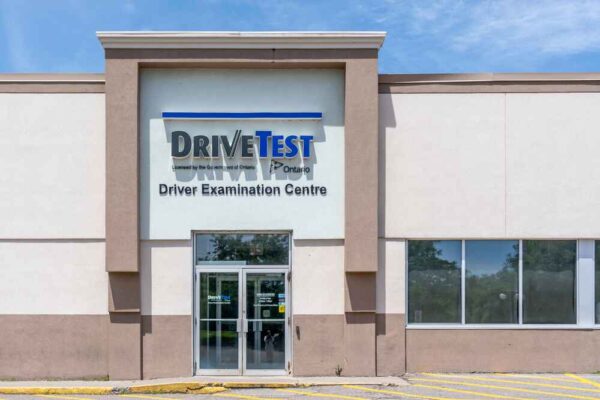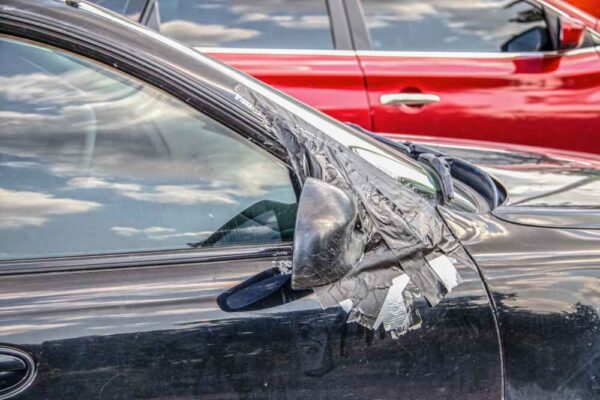
How Much Will My Insurance Go Up with an At-Fault Accident
Nobody wants to be involved in a car accident, yet accidents happen all the time. It’s even worse when you’re found at fault because it goes beyond repair costs and medical bills. A single at-fault accident can significantly raise your insurance rates in Canada and affect your Ontario car insurance premiums for years. Even though accidents are never intentional and sometimes inevitable, insurance companies view them as an increased risk, leading to higher premiums and stricter policy terms.
How much will my insurance go up after an at-fault claim?
The amount your insurance will increase after an at-fault accident usually ranges between 20% and 50%. However, if you’re labelled as a high-risk driver, you might see increases of up to 100%.
In this blog post, we’ll explain how insurance companies calculate rate increases after an at-fault accident, what factors affect the final amount, and fault determination rules in Canada.
How Do Insurance Companies Determine Fault in an Auto Accident?
Fault determination rules (FDR) in Canada depend on the province you live in because each province has its own rules when it comes to determining the at-fault driver, such as:
- Ontario: Insurance providers use the official Fault Determination Rules under Ontario’s Insurance Act.
- Alberta: Insurance companies determine fault by following Alberta’s Insurance Act and are guided by common-law principles.
- British Columbia: Insurers determine fault based on the guidelines set by the Insurance Corporation of British Columbia (ICBC).
- Manitoba: A fault in a car accident in Manitoba is determined by Manitoba Public Insurance (MPI) under the Public Insurance Act.
Although in no-fault provinces, insurance companies always cover the injured parties regardless of who caused the accident, fault is assigned to determine how the collision will affect each driver’s record and premiums.
How Much Does Insurance Go Up After an At-Fault Accident in Canada?
If you’re found at fault in a collision in Canada, you’ll face higher insurance premiums of around 20% to 50%, depending on the severity of the accident, your driving record, and the province’s regulations. Each of these is a key factor that can influence how much your premium increases. An at-fault car accident will mostly stay on your driving record for up to six years, especially if the claim amount was high or if the accident involved injuries, and your premiums may be affected during this period. That’s why our experts in McDougall recommend carrying an accident forgiveness endorsement in Ontario. Accident forgiveness is an optional coverage rider that prevents premium increases after your first at-fault accident. Many insurers only provide this endorsement to drivers who maintain a clean driving record for several years and meet specific eligibility requirements, meaning you must qualify for accident forgiveness based on certain criteria.
Contact us today to learn more about the accident forgiveness waiver and other endorsements available for Ontario drivers.
Checkout:
- Young Drivers Insurances
- Experienced Drivers Insurance
- Do Males Pay More Than Females On Car Insurance?
- Careless Driving in Ontario
How Long Does an At-Fault Accident Stay on Your Record in Canada?
The First At-Fault Accident
Your first at-fault accident will mostly stay on your record for up to six years, and it’ll affect your insurance premiums during this period. Past accidents can also impact your future insurance rates, as insurers may consider your accident history when determining premiums. However, if you have Accident Forgiveness coverage, your insurer won’t increase your rates after your first accident.
The Second At-Fault Accident
If you’re involved in a second at-fault accident within five years or less from the first one, you may be labelled as a high-risk driver. High-risk drivers face higher insurance premiums by up to 100% or more, limited coverage options, and even denial of renewal from standard insurance companies.
How Do I Know if I Have Accident Forgiveness?
If you’re not sure whether you have accident forgiveness, review the details of your auto policy or contact your insurance provider directly to confirm. They can explain whether this endorsement is included in your policy, and if not, they’ll check if you’re eligible to buy it based on your driving history and previous claims. Although purchasing this optional coverage will add to your insurance premium, it’s a worthwhile investment because it can prevent steep premium increases after your first at-fault accident.
What Is No-Fault Car Insurance in Canada?
No-fault car insurance means that the insurer will compensate the injured parties in an accident, regardless of fault. Each driver’s own insurance company pays for vehicle repairs, medical bills, and rehabilitation expenses up to the coverage limits outlined in their policy.
Many people think that no-fault car insurance means fault is never determined, but this isn’t true. The no-fault car insurance system is created to speed up the process of handling claims by allowing drivers to get compensated from their insurer instead of having to deal with the other driver’s insurer. This approach reduces delays, limits legal disputes, and allows injured parties to receive prompt support. However, insurance companies will still investigate the case to determine fault and increase the at-fault party’s insurance rates accordingly.
What Does 100% at Fault Mean?
If you’re 100% at fault in a car accident, it means that you’re completely responsible for causing the collision. Although in no-fault provinces, like Ontario and Alberta, each driver’s insurance company covers their injuries and vehicle damage, fault is still determined. Being fully at fault will remain on your driving record and affect your insurance premiums for up to six years. Your coverage and premiums are subject to the specific terms and conditions of your insurance policy, which may impact how claims are handled after an at-fault accident. For example, if you rear-end another vehicle because you were distracted, you’d be deemed 100% at fault, and it’ll go on your driving record for years.
What Happens to Your Insurance Premiums if You Share Liability With the Other Driver?
If you share liability with the other driver or drivers involved in the accident, you’ll still face higher insurance premiums, but the increase won’t be as steep as it would be if you were 100% at fault. The exact amount that’ll be added to your premiums depends on the percentage of fault assigned, accident results, your driving record, and your insurer’s assessment of risk.
Different Types of Accidents and How Fault is Determined
When it comes to determining fault, insurance companies rely on provincial fault determination rules, witness statements, dash cams, and evidence from the scene. Although each accident has its own circumstances, there are common patterns insurers follow when assigning liability. These patterns help insurance companies determine whether one driver is at fault or if all the parties involved are liable.
Rear-End Collisions
In most cases, the rear driver in a rear-end collision between two vehicles is the one who caused the accident, meaning that they’re 100% at fault, except in some cases:
- Sudden Stop: If the front driver suddenly stops without signalling, and for no valid reason, they’ll be partially at fault or even 100% at fault, especially on highways.
- Reversing: If the front driver is reversing, and another car hits their vehicle from the back, the front driver is usually 100% at fault.
If there are more than two cars involved in the collision or if it’s a chain-reaction crash, it doesn’t have to be the rear-most driver’s responsibility. In this case, fault is assigned individually for each impact.
T-Bone Collisions
T-bone collisions happen when the front of one car hits the side of another. These crashes usually happen due to unsafe driving habits, including texting while driving, failing to yield, running a stop sign, or not paying attention to traffic.
T-Bone accidents can be so severe that they result in total loss of the vehicle. In this event, your insurance company will compensate you for the cash value of your car, minus your deductible and the depreciation that has occurred since you purchased it.
As for determining fault, insurers will review the circumstances leading up to the crash and assign fault accordingly. Mostly, the driver who committed any of these violations is 100% at fault:
- Ignored a stop sign
- Ran a red light
- Failed to yield while making a left turn
- Entered an intersection without the right-of-way
- Texted or used the phone while driving
- Was distracted while on the road
Head-On Collisions
These collisions are usually the most severe and can result in significant injuries, fatalities, and extensive vehicle damage or even total loss. In most cases, the driver who leaves their lane and enters opposing traffic is deemed 100% at fault. Insurance companies investigate the case by taking witness statements, reviewing police reports, and watching dash-cam footage.
Chain-Reaction Collisions
Chain-reaction collisions involve three or more vehicles and usually happen because of traffic congestion, severe weather conditions, or a driver’s failure to maintain a safe distance. In these cases, fault is assigned to each driver individually for the specific collision they caused. Sometimes, a vehicle might be pushed forward by the one behind it, and if this happens, the pushed vehicle won’t be at fault.
It’s important to know that this information is provided for general information purposes, and each insurer assigns fault differently. At McDougall Insurance, we work closely with our clients to explain how fault determination may impact their coverage and premiums. Contact us today for a free quote!
How Can I Protect My Auto Insurance Premiums from Increasing?
Even if you have a great driving history, a single at-fault accident can ruin years of safe driving, especially if you’re deemed 100% at fault. Follow these tips from our experts at McDougall to help protect your insurance premiums from increasing:
Tip #1: Be Careful While Driving
This might sound like stating the obvious, but careful driving will reduce your chance of accidents, and even if you’re involved in a crash, you’re less likely to be the at-fault driver. As long as you’re behind the wheel, you should always stay alert, follow traffic, and anticipate other drivers’ actions. This way, you’ll be protecting yourself, others on the road, and your insurance premiums from increasing.
Tip #2: Review Your Policy and Driving Record
Understanding your law history and any previous violations, even minor ones, can help you spot potential issues before they become a problem for your insurer. An at-fault accident can stay on your driving record for up to six years, which might limit your eligibility for certain discounts, and insurers will view you as a high-risk driver. Reviewing your policy regularly can help you spot coverage gaps, limitations, and exclusions that might affect you after a crash.
Tip #3: Purchase Accident Forgiveness Endorsement
Accident forgiveness is an endorsement in Ontario that excludes your first at-fault accident from affecting your auto insurance rates. Many insurers set eligibility requirements, including:
- A clean driving record for several years
- No serious traffic convictions or licence suspensions
- Meeting the insurer’s minimum experience requirements as a licensed driver
This optional coverage can protect you from steep premium increases after your first at-fault accident, but it won’t apply to multiple at-fault accidents within a short period.
Readmore:
Tip #4: Ask About Available Discounts
If you’ve been insured with the same insurance company for years and you don’t have any at-fault accidents, you should ask your insurer about available discounts. No matter how small the percentage is, every bit helps reduce your premiums. In most cases, there’s no reason to exclude yourself from potential savings, except if getting a discount will require removing essential coverage.
Tip #5: Bundle Your Insurance Policies
Bundling your insurance policies, such as home and auto insurance, with the same provider can help reduce the total amount you pay for your insurance and simplify coverage management. Many insurers offer discounts to customers who maintain multiple insurance policies under a single account. Besides the discounts, bundling makes it easier for you to manage your policies, track renewals, and coordinate claims through a unified point of contact.
Contact us to secure bundled home and auto insurance policies and explore the available discounts today!
Read more:
- Why you Should Never Drive without Vehicle Insurance
- The Ideal Height and Weight to Sit in Front Seat -Ontario Full Guide
- Stunt Driving in Ontario Everything You Need to Know
- Car safety certificate Ontario – Safety Inspection | Ultimate Guide
- A Full Guide to Temporary Car Insurance – Ontario
- Do I Need To List A G1 Driver On My Insurance Policy?
- Car Tag Tracking Systems in Ontario
How Much Will My Insurance Go Up With an At-Fault Accident – FAQs
How does an at-fault accident impact my coverage?
Besides increasing your insurance rates, an at-fault accident can also limit your coverage options and prevent you from qualifying for discounts.
How could I lower my insurance premiums after an accident?
Lowering your insurance rates after an at-fault accident is possible, but it requires time and commitment. Here’s how you can do it:
- Maintain a clean driving history and try to avoid any other accidents.
- Increase your deductible.
- Complete a defensive driving course because some insurers offer discounts to drivers who complete approved training programs.
- Shop around for quotes; you might be able to get lower rates from another insurance company.
- Contact McDougall to get competitive auto insurance quotes from the best companies in Ontario.
What happens if I’m found 100% at fault in a car accident?
If you’re found 100% at fault in a car accident, it will go on your driving record and increase your insurance premiums for up to 6 years. It may also affect your eligibility for certain discounts and coverage add-ons.
How long does an at-fault accident stay on my record in Canada?
An at-fault accident will usually stay on your driving record for up to six years, depending on your province’s regulations and your insurer’s policies.
You Might Want to Read
August 17, 2025
What to Bring to G2 Road Test Ontario
August 17, 2025
How Much Will My Insurance Go Up with an At-Fault Accident
June 15, 2025
Sideswipe Collision: Who Is at Fault in Sideswipe Accidents?



